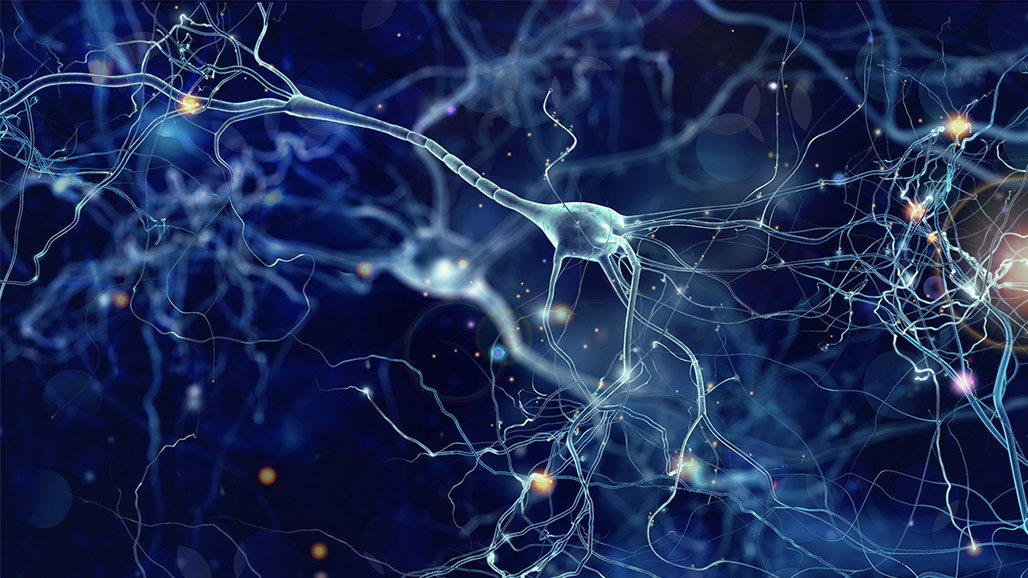The field of neuroscience may be on the verge of a significant breakthrough. For the longest time, our understanding of how the nervous system, including the brain, operates revolved primarily around neurons and glial cells. These two categories were thought to be the main players. However, recent discoveries have unveiled the existence of a “hybrid cell” that blurs the lines between neurons and glial cells. This revelation has the potential to reshape the way scientists approach treatments for neurodegenerative diseases like Alzheimer’s.
Traditionally, neuroscientists believed that neurons were the primary drivers of brain function, responsible for processing and transmitting information through intricate networks. They received support from glial cells, which played crucial roles in providing structure, energy, and immune functions.
Within the realm of glial cells, a specific type known as astrocytes garnered attention due to their proximity to synapses, the junctions where neurons connect and communicate. Scientists had long speculated that astrocytes might have a significant role to play in synaptic transmission and, consequently, information processing. However, past research often yielded conflicting outcomes, leaving doubts lingering in the field.
A recent breakthrough, published in the journal Nature, may finally put these doubts to rest. This study provides compelling evidence that astrocytes, like neurons, release neurotransmitters.
The research journey began with a close examination of astrocytes in mouse tissues, employing advanced molecular biology techniques. Researchers uncovered signs of the necessary machinery for the rapid secretion of glutamate, one of the primary neurotransmitters employed by neurons. However, finding the machinery alone wasn’t sufficient; they needed to confirm its effective operation.
To achieve this, researchers needed to demonstrate that these “hybrid” cells could release glutamate at a pace comparable to synaptic transmission. They accomplished this through cutting-edge imaging techniques that allowed them to observe glutamate release in the brains of live mice. The hypothesis was confirmed, and the results were intriguing.
Interestingly, when these glutamatergic astrocytes were disrupted, the research team observed effects on memory consolidation. They also identified connections to conditions like epilepsy, where disruptions exacerbated seizures. This discovery could potentially open up new avenues of research and treatment in the field of neuroscience.
This study holds immense importance due to its potential to bring about significant advancements in our understanding of brain disorders. According to Ludovic Telley, one of the co-directors of the study and an assistant professor at the University of Lausanne, this discovery reveals a far greater complexity in the world of brain cells than we previously comprehended. This complexity extends not only to neurons but also to non-neuronal cells like astrocytes. It broadens the spectrum of contributors to brain computations and assigns more specialized roles to each subpopulation. Consequently, it also increases the number of possible targets for therapeutic interventions and refines the strategies for treating brain-related ailments.

In essence, the identification of these new cells opens doors to a deeper understanding of neuroscience, adding layers of complexity to our knowledge of the brain and nervous system. This newfound complexity suggests that future treatments for neurodegenerative conditions such as Parkinson’s and Alzheimer’s could potentially have a wider array of targets than we previously envisioned.
The initial steps involve exploring the potential protective roles these new cells may play in diseases like Alzheimer’s. Researchers aim to determine if alterations in the population of glutamatergic astrocytes occur in patients, such as those with Alzheimer’s disease, by analyzing existing transcriptomic databases. Once a role in specific pathologies is established, researchers can develop therapeutic strategies, likely involving gene therapy, to selectively target this cell population and modulate its function.
However, there are still many questions that researchers need to address. These include pinpointing the exact locations of these cells within the brain, understanding their conservation in humans, mapping their distribution, exploring their links to various diseases, and deciphering their evolutionary significance in human biology. The study’s findings pave the way for a promising journey into understanding the intricacies of our brain and the potential for groundbreaking treatments in the future.









